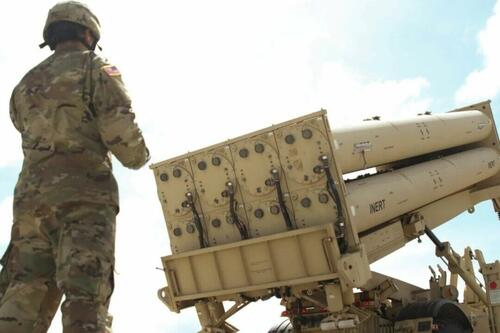Import The Vote!
Authored by Robert Aro via the MisesInstitute,
You wake up tomorrow, finding that in a vote you never thought possible, Ben Bernanke (D), former Chair of the Federal Reserve, has just been installed as President of the United States. Making matters worse, the election in 37 days will secure his position, possibly for the next five years. The other wrinkle, New York City, in addition to all swing states, needs to vote Republican in order to remove him.
…That’s basically what elections are like in Canada…
Looking at the projections, which were highly inaccurate for the American election, Canada has 343 seats in Parliament to fill (electoral ridings).
CPC (Conservatives/blue) have 126 versus LPC (Liberals/red) having 185; it’s a First Past the Post (FPTP) system, so first to 172 votes takes all. Playing around with the numbers sheds light on the issue, i.e., it seems slanted towards one party. For example, even if the Conservatives win the four maritime provinces considered Liberal strongholds, and Manitoba (MB) in the middle, they’d still only have 162 votes and inevitably lose.
Testing various combinations, the election truly hinges on winning in at least one of the three biggest cities, Toronto, Montreal, and/or Vancouver. Toronto for example had 25 ridings last election.
Like the USA, major cities are notorious for voting “left,” as last election all votes in Toronto went to the Liberal Party.
Naturally, the riding lines rely on guesswork and the bias of its creators. Although the majority of Canadians couldn’t even tell you whose job this is, the calculation looks something like this:
The formula yields some interesting results. Looking at the voter results from 2021:
It’s not uncommon that the party who wins the popular vote manages to lose the election. In 2021 with almost 300,000 less votes than the Conservatives, the Liberals won, ruling over a country of 38 million people via 5.164 million voters.
The election process never seemed quite right in Canada. Through various X posts and the Joe Rogan interview where Elon Musk discusses his experience with the Department of Government Efficiency (DOGE), the election strategy becomes quite elucidating. In the interview, Elon says (1:05:30 min) that without massive entitlements to draw foreigners, Democrats would lose a massive number of voters.
A recent headline from Reuters gives great context:
New York State’s top court on Thursday struck down a New York City law that would have permitted more than 800,000 legal non-citizens to vote in municipal elections.
Musk spoke of this again just last week to Ted Cruz, saying:
By using entitlements fraud, the Democrats have been able to attract and retain vast numbers of illegal immigrants.
Should humanity have a future, one can only imagine how this epoch in time is described, where elected officials happily flooded their countries with foreigners in an attempt to enshrine the vote in their favor.
The abstract from the 177-page UN report titled: Replacement Migration, from 2000, illustrates the idea. Based on predictions by the few, being an aging and declining population, requires:
… comprehensive reassessments of many established policies and programmes [SIC], including those relating to international migration. Focusing on these…









